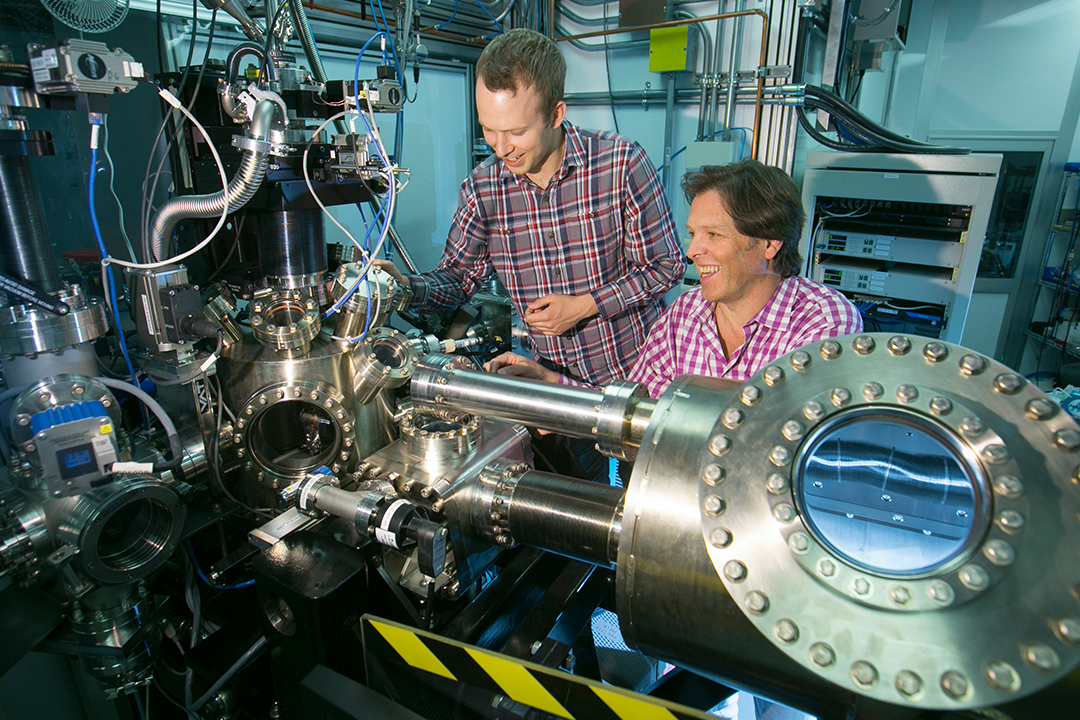
Powering the next computer revolution
From computers to cell phones, the silicon chips that make our electronic devices work have progressively shrunk in size by using smaller and faster components, sometimes just a few dozen atoms thick.
By Federica GiannelliBut in about five years, chip developers will not be able to go smaller because materials that thin become progressively unreliable chip semiconductors, says Neil Johnson, a recent University of Saskatchewan PhD graduate.
He has been working to solve the problem by studying silicene, a super-thin material that holds promise for helping the computer industry develop smaller and more powerful chips.
Synthesized in Europe in 2012, this silicon-derived two-dimensional (2D) material, called silicene, is only one atomic layer thick which makes it invisible to the naked eye but also smaller and potentially faster than materials currently in use for chips.
“Silicene is a newcomer to the world of 2D materials,” said physics professor Alexander Moewes, Johnson’s supervisor and U of S Canada Research Chair. “But it has already shown it could potentially succeed where graphene struggles.”
Unlike the 2010 Nobel Prize-winning graphene, silicene has the advantage of having a ‘band gap’ ̶ the energy barrier electrons must vault to carry a current. ‘Band gaps’ are fundamental for materials used in chips: they allow them to switch on and off, and perform ‘logic’ operations.
Within months of silicene’s discovery, Moewes and Johnson met at the Canadian Light Source (CLS) synchrotron on the U of S campus with the European research group that first synthesized it.
“2D materials are almost completely invisible under powerful optical microscopes,” said Johnson. “But we can still study them because of the incredibly bright X-ray beams of the Canadian synchrotron.”
Funded by the federal agency NSERC and Canada Research Chair program, Johnson embarked on a project to shed light on the properties of silicene and on the shortcomings that currently limit its chip applications.
Johnson analyzed silicene sheets at the CLS in 2013—the first time silicene was created in Canada.
“I learned to ‘grow’ silicene myself from the best in the field,” said Johnson. “That’s when my excitement really took off.”
With three publications in major journals, he hopes his project will help other researchers overcome silicene’s limitations.
Silicene currently needs the support of another material to keep its flat shape, the most commonly used being silver. But Johnson found that silver turns silicene into a metal and, therefore, is unusable for chips.
Other researchers tried getting around this problem by sandwiching the silver with multiple layers of silicene or exposing silicene to air to turn it into a semiconductor.
Johnson found both methods failed. The “silicene sandwich” crumpled silicene into 3D pieces of silicon, and air exposure turned silicene into glass, making it unusable outside a lab.
“My experiments will hopefully help one day to produce silicene without a support material,” he said, hoping to help spur the next leap forward in computer technology.
Federica Giannelli is a graduate student intern in the U of S research profile and impact unit.
This article first ran as part of the 2016 Young Innovators series, an initiative of the U of S Research Profile and Impact office in partnership with the Saskatoon StarPhoenix.

